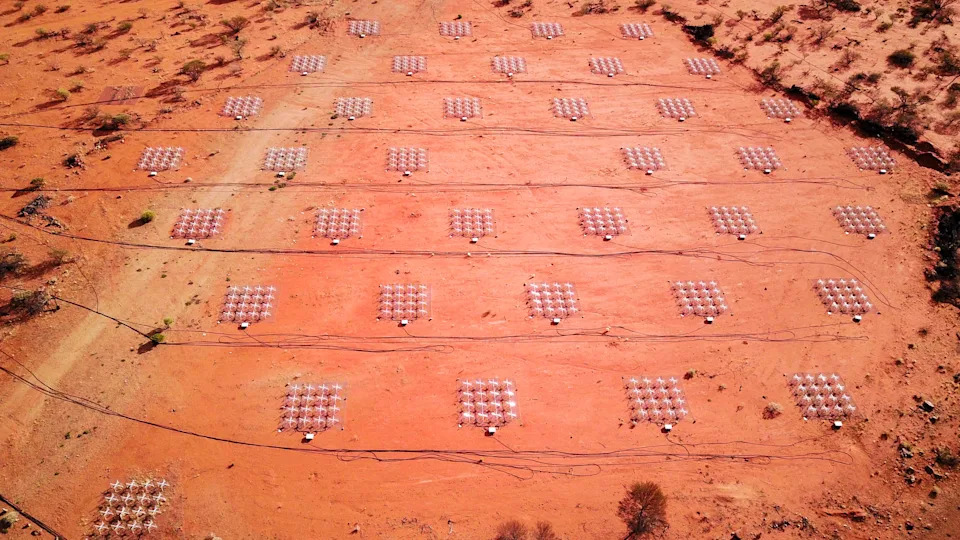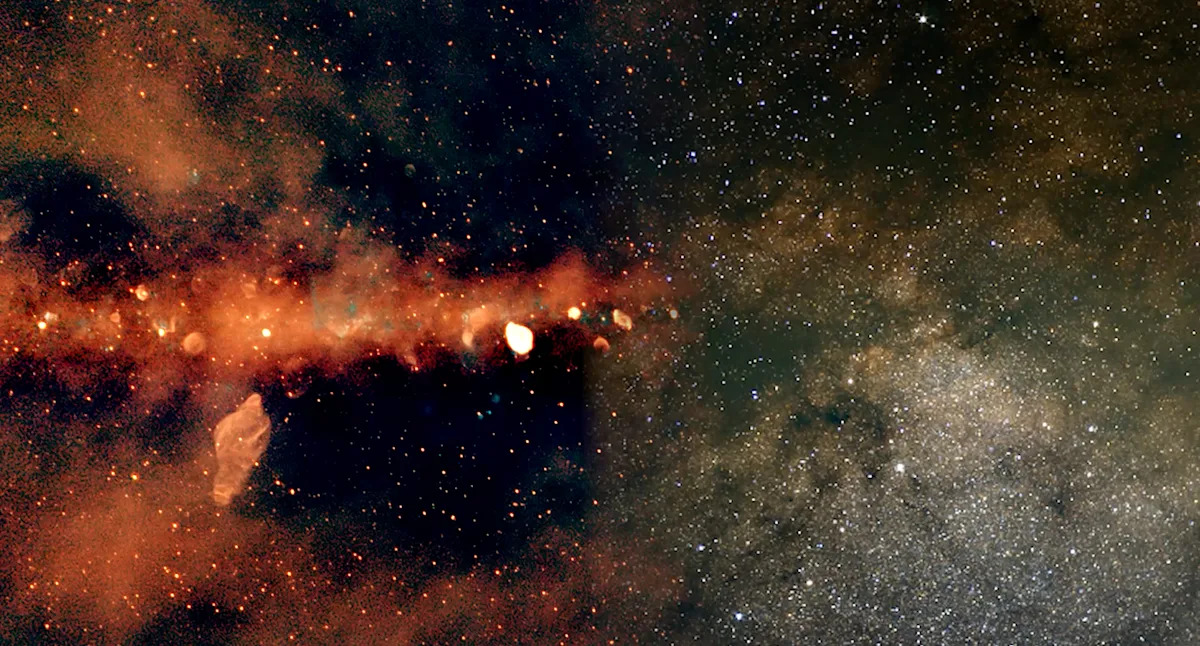After dedicating 18 months and 1 million computer processing hours (CPU) to create a single image, astronomers in Australia have released a new expansive view of our galaxy from the Southern Hemisphere.
In 2019, the same outback telescope, the Murchison Widefield Array (MWA), was used to create a survey of the Milky Way. But the new image has twice the resolution, 10 times the sensitivity and covers twice the area as the previous attempt.
It’s now the largest low-frequency radio colour visualisation of the Milky Way ever created. The vivid image shows us how the galaxy would appear if we could see in radio waves, rather than light waves.
One of its two creators, PhD student Silvia Mantovanini, recalled the first time she saw the image, saying it left her very “proud”.
“I was pretty excited to see the result,” she told Yahoo News Australia.
“But then the scientist that is in me actually saw all the small errors, all the small pieces we can improve.”

The wide-view GLEAM-X image shows the Milky Way in radio colour. Source: Silvia Mantovanini & the GLEAM-X Team
How was the data for the image collected?
The image was created by the Curtin University node of the International Centre of Radio Astronomy Research (ICRAR), a joint venture with the University of Western Australia. It uses data collected from two surveys of the galaxy.
The first was the GaLactic and Extragalactic All-sky MWA (GLEAM) survey of the Milky Way, which occurred over 28 nights between 2013 and 2014. This was the data source for the 2019 image.
Then in 2018, the telescope was upgraded, and the GLEAM-eXtended survey (GLEAM-X) was conducted over 113 nights between 2018 and 2020.
Both were surveys of the same section of sky, but GLEAM-X contained fire details. The data from both were then fed into processors at the Pawsey Supercomputing Research Centre, a joint venture between multiple universities and the Australian government.
Image will help our wider understanding of our galaxy
Mantovanini’s supervisor, Associate Professor Natasha Hurley-Walker, called the achievement a “milestone in astronomy” because it’s the first time a low-frequency image has been published showing the entire Southern Galactic Plane. She added that the image will help in the study of the Milky Way’s structure.
Mantovanini’s focus is searching the image for remnants of supernovas — giant explosions of stars that increase in brightness for months, and planetary nebula — glowing shells of ionised gas ejected from red giant stars before they die.
It shows exploded stars as large red circles, and nurseries where new stars are forming as blue, making them clearly identifiable.

An aerial view of the MWA telescope in Western Australia. Source: ICRAR/Curtin University
But the image is also expected to help scientists better identify and understand pulsars — rapidly spinning neutron stars that emit bursts of radiation. “The power of this image is wide,” she said.
Mantovanini believes the image should be inspiring not just for astronomers but the wider public who have a thirst to understand the universe.
“This is our galaxy. The image is telling us where we are, what’s surrounding us, and it improves our knowledge,” she said.
Love Australia’s weird and wonderful environment? 🐊🦘😳 Get our new newsletter showcasing the week’s best stories.


